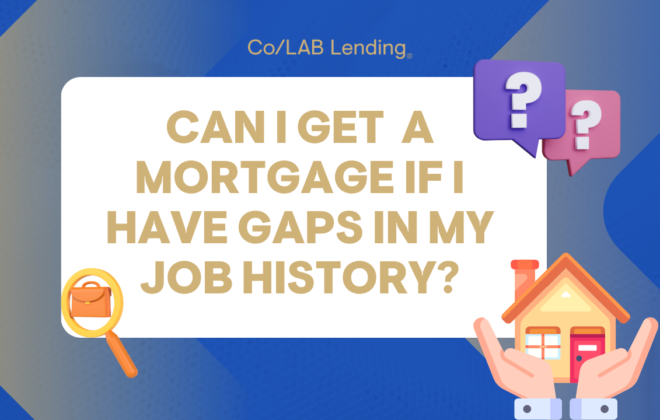Understanding Hidden Costs of Homeownership
By no means should this article discourage you from homeownership. In fact, in the vast majority of the country, buying a home is actually cheaper than renting one. However, it’s important that new homeowners are well educated on some of the “hidden” costs of homeownership.
1. Understanding Closing Costs
Almost immediately, homebuyers start getting hit with fees. Buyers should be sure to have a buffer in their budget to pay for closing costs. While sometimes these fees can be negotiated, buyers should be prepared to pay 2%-4% in order to seal the deal.
Closing cost estimate on a $160,000 dollar home = $4,800
2. Estimating Moving Costs
Unless you own a moving van, you’re probably going to have to pay for a rental. Generally speaking, to the cost of renting a moving truck ranges from $30-$50 upfront and then $.50-$.80 per mile after that.
While it sounds cheap, the miles add up quickly. For that reason, plan out how you’re stacking your furniture and other belongings to limit your trips to and from your new home.
Moving truck cost estimate for a distance of 25 miles with two tips = $105
3. Budgeting for Utility Bills
This is where homeownership really starts to add up. According to Energy.gov, the typical U.S. family spends at least $2,200 a year on home utility bills. However, there are many ways you can reduce these expenditures.
Quick Tips for Reducing Energy Consumption:
- Install a programmable thermostat to automatically manage your heating and cooling system. Try lowering the heat while you’re at work and when you’re asleep. Research by Energy.gov found that homeowners can save as much as 10% a year on heating and cooling costs simply by turning their thermostat back 7°-10°F for 8 hours a day.
- Use ENERGY STAR® light bulbs, appliances, and install new energy efficient windows. In fact, EnergyStar.gov states that a typical home will save $126-$465 a year when replacing single-pane windows. Moreover, energy efficient bulbs use 70-90% less energy than traditional incandescent bulbs!
- Aim to use less water. According to the Environmental Protection Agency an average family of four uses 10,500 gallons of water in a 30-day period! For this reason, only run the dishwasher and washing machine when you have full loads, switch to low-flow shower heads, take shorter showers, and be sure to repair any leaky faucets and toilets.
Utility Bill estimate per year = $2,200
4. Preparing for Property Tax
Property tax is a big expense that many first time homebuyers forget to consider during their homebuying calculations. Property tax is based on the assessed value of your property.
This value is determined by an assessor who considers a variety of information about your home and its surroundings to estimate its market value. Property tax is generally a percentage of your property’s value.
For instance, in Pennsylvania, the average property tax is around 1.405%, according to the Tax Foundation. This means on a $160,000 home, property taxes will be about $2,248 a year. It’s important to remember that property tax in developing areas will continue to rise.
Property Tax estimate per year = $2,248
5. Choosing the Right Insurance
Unlike car insurance, home insurance is optional. However, most lenders require you to have home insurance before they’ll approve you for a mortgage. Move over, it can be a costly mistake to forgo buying insurance or to go with the cheapest policy you can find.
Depending on the facets of your home, your insurance premium can fluctuate significantly. In general, homeowners can expect to pay about $30-$40 per month for every $100,000 of property value. To reduce this expense as much as possible, get rid of the trampoline, don’t build a treehouse, and reconsider the swimming pool.
If you already have an insurance policy, see if your agency has any deals for bundling insurance. If you’re really trying to save big on your home insurance, you can also:
- Make updates to the house (i.e. new roof, electric, plumbing, etc.)
- Update security (i.e. smoke alarms, security systems, deadbolts on doors, etc.)
- Clean up your credit score
Home Insurance estimate per year (based on average price of a home in PA) = $672
6. Understanding Private Mortgage Insurance (PMI)
If you have enough money saved to afford a 20% down payment, by all means, do it and save on interest and the cost of Private Mortgage Insurance (PMI). Unfortunately, the reality is that many homeowners don’t have that kind of capital on hand, nor do they have to.
For that reason, there are many mortgage options that allow you to receive financing without 20% down. Because there is less money down, it’s common for lenders to require homebuyers to purchase private mortgage insurance (PMI). Typically, PMI ranges from .5%-1% of the entire loan amount on a yearly basis.
Estimated cost of PMI on a $160,000 home with 5% down = $1,140 a year.
Co/LAB Lending
At Co/LAB Lending we understand the costs of homeownership inside and out. That’s why we want to provide our clients with the best options possible to ensure an affordable mortgage options for everyone.
Whether you’re looking for a loan without PMI or you’re a veteran looking to purchase a home, we have an incredible variety of mortgage options that could meet your needs. If you’re interested in learning more, contact us by clicking the button below.
If you’re interested in learning more, contact us by clicking the button below.
Mortgage Consultation Today!
Categories
- Credit (4)
- FHA Loans (3)
- Finances (3)
- First Time Home Buyers (6)
- Grab Bag (7)
- Home Technology (1)
- Homebuying Tips (17)
- Inspiration (1)
- Insurance (3)
- Interest Rates (3)
- Loan Process (1)
- Mortgage Financing (14)
- Motivation (1)
- News (1)
- Press Release (8)
- Renovation (2)
- Self Employed (1)
- Tips & tricks (1)
- Uncategorized (134)
- USDA Loans (1)
- VA Loans (2)




